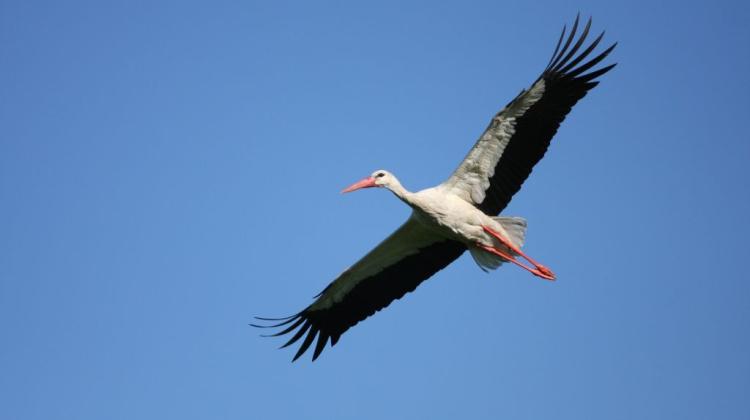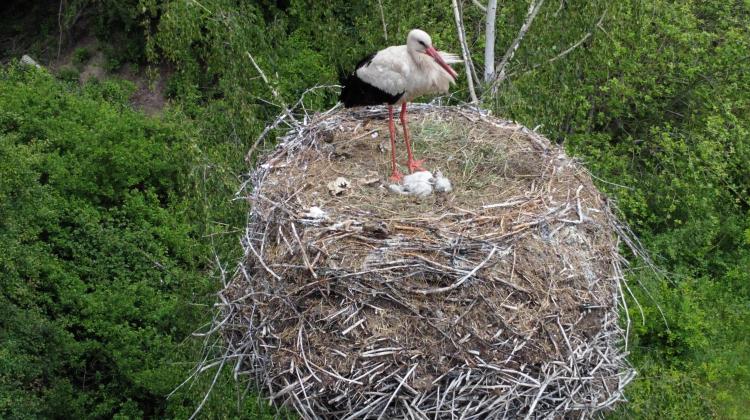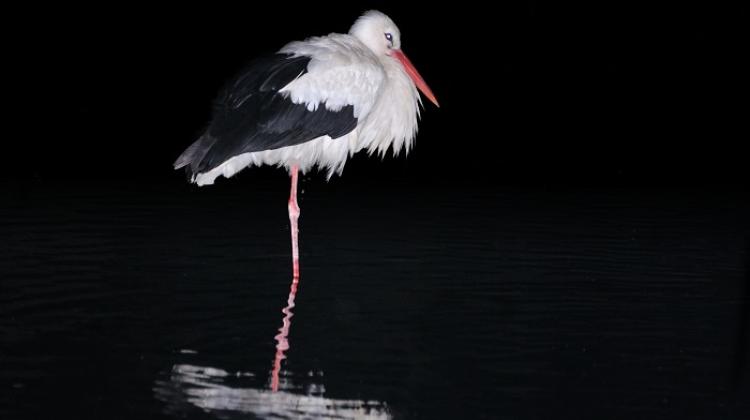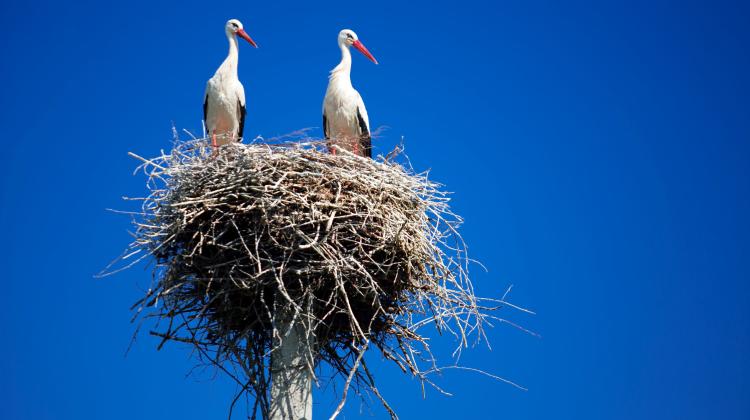Storks left for Africa earlier than usual

This year a little earlier than usual, on August 15, storks clustered in flocks began to leave Subcarpathian Province - ornithologist Dr. Marian Stój reported on Monday. They will reach their destination in November, and start on their way back to Poland in February.
"For example, over the Dukla Pass in the Low Beskid from 15 to 24 August passing flocks of 60, 22, 50 and 40 birds were seen" - said Stój.
He reminded that the storks fly away "on warm, sunny days, when air thermals form". "On such days, they do not waste energy, they soar and glide. They travel up to two hundred kilometres per day. They fly over land, and only during the day" - explained the ornithologist.
Polish storks cross the sea over the Bosphorus. Then they pass through the Middle East and Israel, continue along the Nile and end their journey in the southern part of Africa. They reach their destination in November. In contrast, European storks living west of the Elbe, fly to Africa over Gibraltar. While wintering in Africa they live in flocks.
They start on their way back in early February. Their return is much shorter, less than six weeks. The main reason is the desire to reach the nest as soon as possible.
The naturalist pointed out that not all the storks return in the spring. "Most of the young, sexually immature birds remain in Africa for about three years. Some of them, however, will return to Poland and live in small groups in the meadows. They come back much later, however, usually in mid-May" - said Stój.
The white stork is a protected bird. It lives in central and eastern Europe, and the Balkan and Iberian peninsulas, as well as in North Africa, Asia Minor and Central Asia. It reaches one meter in length, with a wing span reaching two meters. It can be seen in wet meadows, close to human settlements. It feeds on small invertebrates, fish, rodents, amphibians and reptiles - for example it often eats grass snakes and vipers.
Over 50 thousand pairs live in Poland. According to Stój, this year\'s clutch in Subcarpathia "should be considered rather successful". "In some nests even five young were raised, that was the case, for example, in Radoszyce and Tokarnia in the Low Beskid. In total, many more young birds left the nests than in other regions of the country" - he added.
In addition to the white storks, black storks also live in Subcarpathian Province. They will start to migrate to their wintering areas in mid-September.
PAP - Science and Scholarship in Poland
kyc/ son/ mrt/
tr. RL
Przed dodaniem komentarza prosimy o zapoznanie z Regulaminem forum serwisu Nauka w Polsce.


















